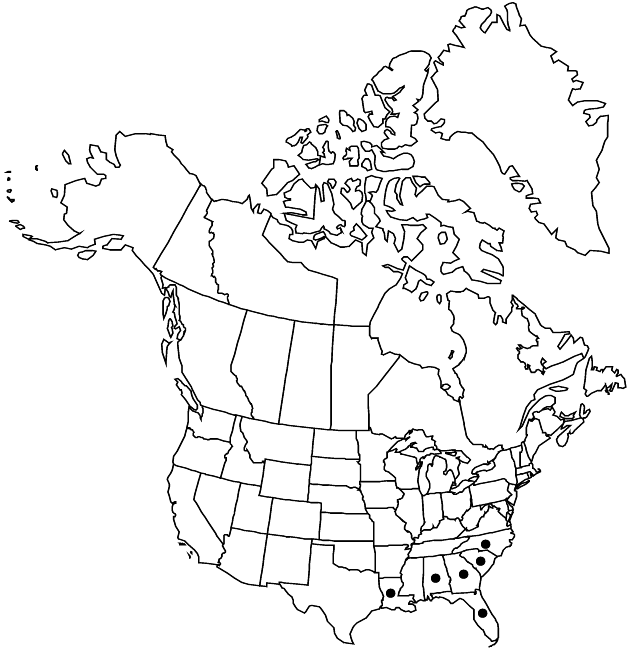Helianthus floridanus
Fl. South. U.S. ed. 2, 629. 1883.
Perennials, 100–200 cm (rhizomatous). Stems (green) erect, hispid to hispidulous. Leaves cauline; usually opposite or alternate, rarely whorled; petioles 0–1 cm; blades (1- or 3-nerved) lanceolate to elliptic or lance-ovate, 4–15 × 0.5–6 cm, bases rounded to cuneate, margins entire or serrulate (often undulate, often ± revolute), faces ± scabrous to tomentulose and gland-dotted (abaxial) or scabrous (adaxial). Heads 1–6. Peduncles 2–15 cm. Involucres ± hemispheric, 12–19 × 7–9 mm. Phyllaries 33–38, lanceolate, 5–9 × 1.5–3 mm, apices (at least outer) obtuse, abaxial faces hispidulous to hispid, gland-dotted. Paleae 4.5–6 mm, entire or weakly 3-toothed (apices purplish, glabrate to puberulent, often gland-dotted). Ray florets 10–20; laminae 20–25 mm (abaxial faces gland-dotted). Disc florets 90+; corollas 4–5 mm, lobes usually reddish, sometimes yellow; anthers dark brown or black, appendages dark (style branches yellow). Cypselae 2.5–3 mm, glabrous; pappi of 2 aristate scales 1.5–2.2 mm. 2n = 34.
Phenology: Flowering late summer to fall.
Habitat: Sandy, open areas
Elevation: 0–50 m
Distribution

Ala., Fla., Ga., La., N.C., S.C.
Discussion
Helianthus floridanus is similar to and intergrades with H. angustifolius, which has narrower leaves, and H. simulans, which is more robust and has longer leaves without undulate margins.
Selected References
None.